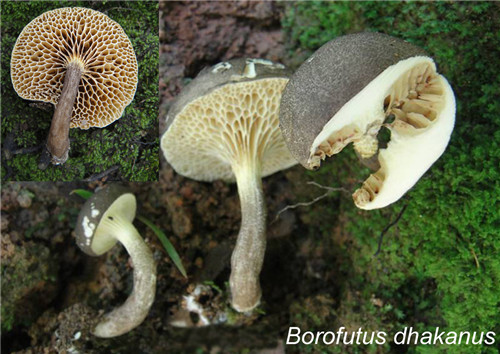Mushrooms of Boletaceae are with important economic and ecological values. Many species in this fungal family are famous edible mushrooms, while some others are poisonous. Ecologically, most species in this group are ectomycorrhizal fungi. However, the systematics of Boletaceae has been problematic due to its wide distribution range, phenotypic plasticity and complicated evolutionary history.
Prof. Dr. YANG Zhuliang, Ph. D Candidates Md. Iqbal Hosen and ZENG Niankai, from Kunming Institute of Botany, Chinese Academy of Sciences, have conducted some systematic studies on different groups of Boletaceae. One new genus and eight new species of Boletaceae were identified and described based on morphological and molecular evidences.
On the survey of mushrooms of Boletaceae from forests dominated by Shorea robusta in Bangladesh, a new genus was uncovered and named as Borofutus referring to its large pore of the hymenophore, one important macro-morphological character for the identification of this genus. The only known species of this genus, B. dhakanus, was described. Molecular phylogenetic analyses showed that Borofutus is closely related with Spongiforma, a gasteroid genus described from Southeastern Asia (Hosen et al. 2013).
Morphological and molecular phylogenetic studies on Phylloporus showed that at least 21 species could be identified from China, and 7 species were described as new species. Preliminary biogeographical analysis showed that species from East Asia are closely allied with those from Southeastern Asia, and species-pairs or closely related species are relatively common between East Asia and North/Central America, while only one species-pair can be detected between East Asia and Europe. Unexpectedly, no disjunctive distribution of species in this genus was found between any continent pairs of East Asia, Europe and North/Central America (Zeng et al. 2013).
Relative results have recently been published in Fungal Diversity (http://link.springer.com/journal/13225/58/1/page/1 , Hosen et al. 2013; Zeng et al. 2013). These studies were supported by the Joint Funds of the National Natural Science Foundation of China and Yunnan Provincial Government (No. U0836604) and the Funds for International Cooperation and Exchange of the National Natural Science Foundation of China (No. 31210103919).





